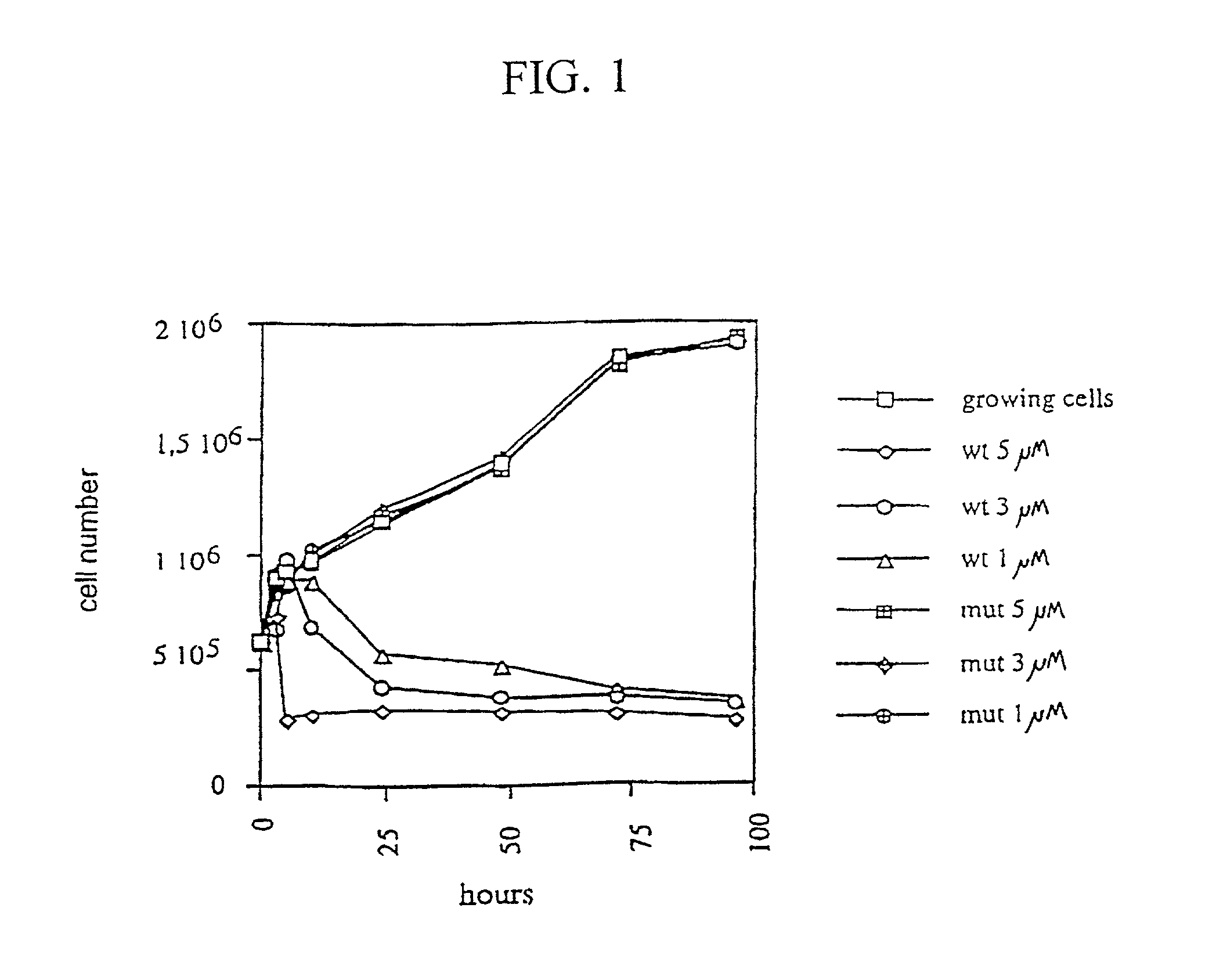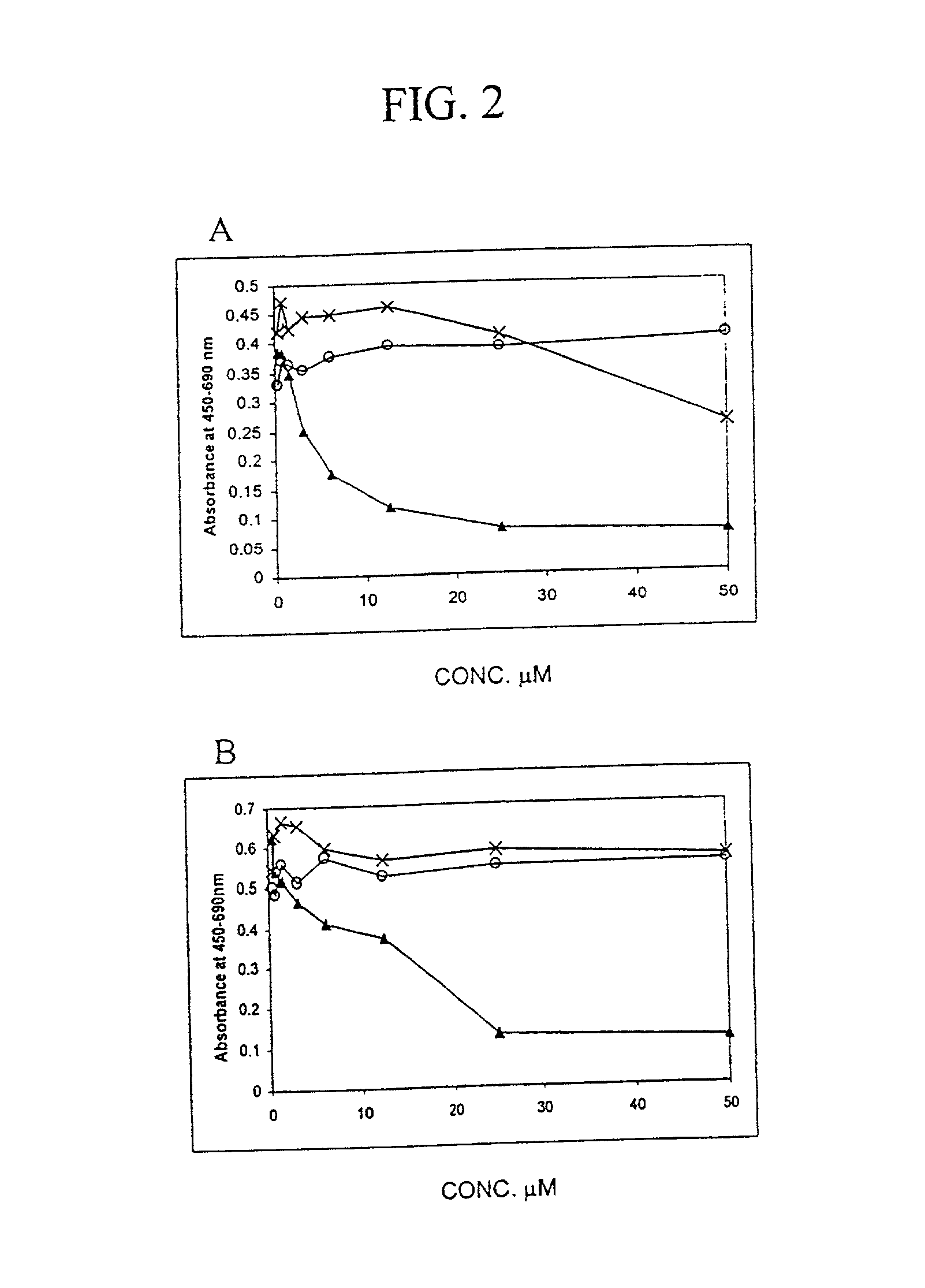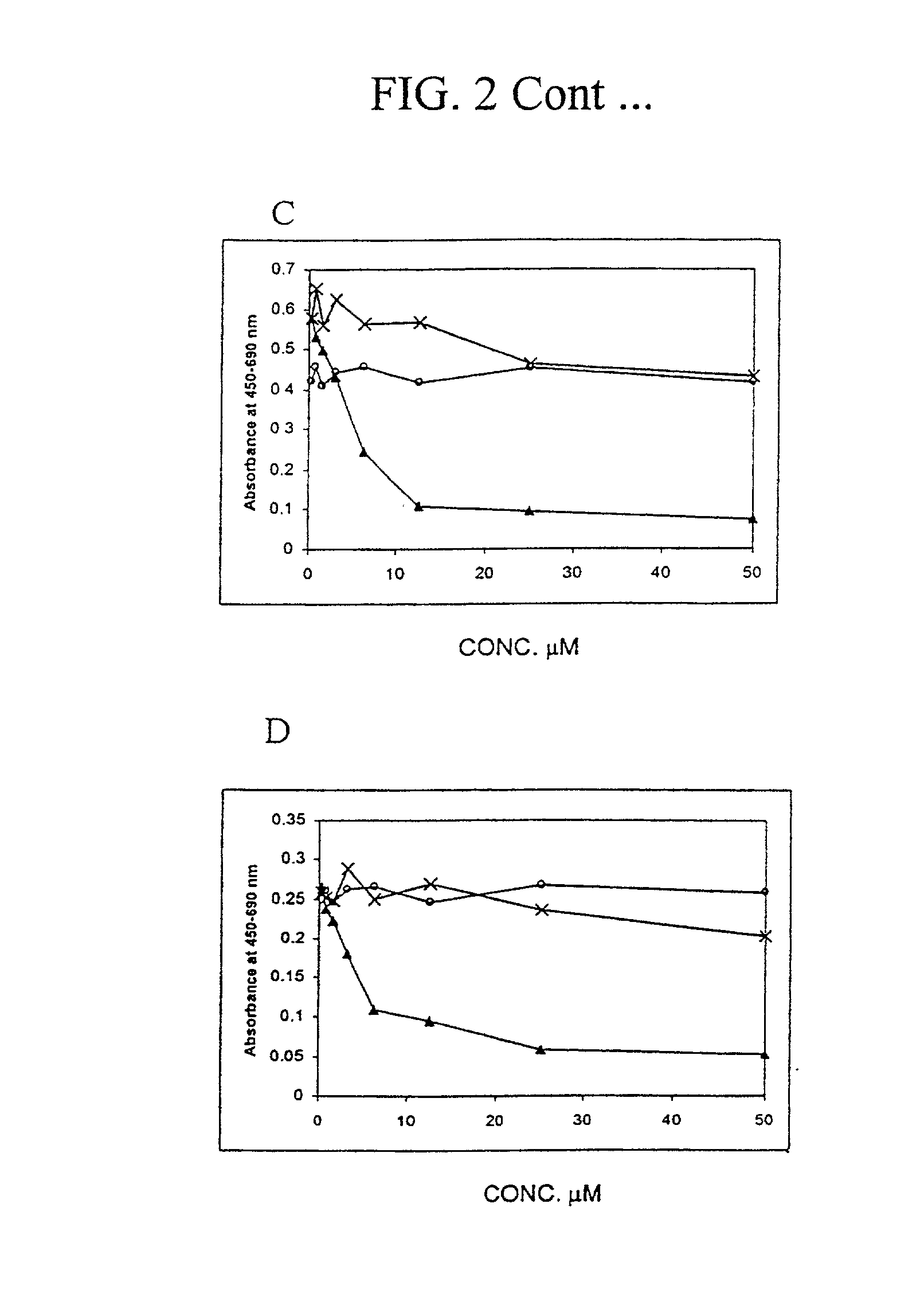Transcription factor E2F DNA-binding domain inhibitor peptides and their use
a transcription factor and domain inhibitor technology, applied in the field of transcription factor e2f dna-binding domain inhibitor peptides and their use, can solve problems such as restnosis
- Summary
- Abstract
- Description
- Claims
- Application Information
AI Technical Summary
Problems solved by technology
Method used
Image
Examples
Embodiment Construction
[0152] Materials and Methods
[0153] Recombinant E2F
[0154] N-terminal fragments of human E2F1 (aa 64-301), E2F2 (aa 69-306), E2F3 (aa 128-356), E2F4 (aa 1-198), E2F5 (aa 42-233) were cloned into bacterial expression vector pET28b (Novagen) and were purified from BL21 DE3 cells by immobilised metal-affinity chromatography. A N-terminal fragment of DP1 (aa 85-249) was expressed as GST fusion protein and purified by glutathione-affinity chromatography.
[0155] Peptide Synthesis
[0156] Peptides were synthesised on a solid phase using a multiple peptides synthesizer employing Fmoc / t-butyl protecting groups. The Fmoc group was cleaved by 20% (v / v) piperidine in dimethylformamide and successive amino acids were added as N-hydroxybenzotriazole esters. The peptides were deprotected and cleaved from the resin by 93% trifluoroacetic acid, 3% ethaneditiol, 2% anisole, 2% water. Peptides were analyzed by high performance liquid chromatography. Tetravalent MAP4-D6-11 peptide was synthesized using a Fm...
PUM
 Login to View More
Login to View More Abstract
Description
Claims
Application Information
 Login to View More
Login to View More - R&D
- Intellectual Property
- Life Sciences
- Materials
- Tech Scout
- Unparalleled Data Quality
- Higher Quality Content
- 60% Fewer Hallucinations
Browse by: Latest US Patents, China's latest patents, Technical Efficacy Thesaurus, Application Domain, Technology Topic, Popular Technical Reports.
© 2025 PatSnap. All rights reserved.Legal|Privacy policy|Modern Slavery Act Transparency Statement|Sitemap|About US| Contact US: help@patsnap.com



